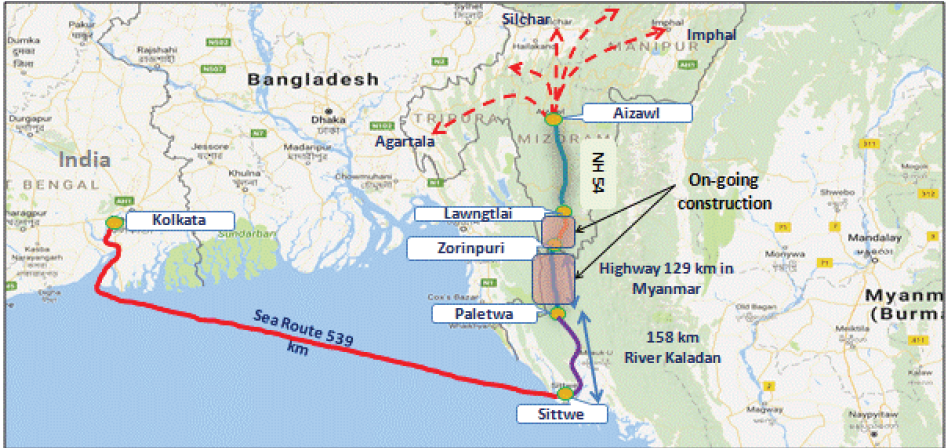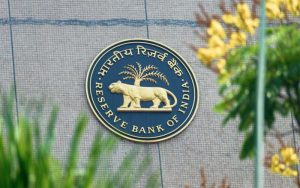Sittwe Port: A Gateway to Regional Connectivity and Economic Growth
Introduction : Sittwe Port
Sittwe Port, located in Myanmar’s Rakhine State, is a key component of India’s Act East Policy, which aims to improve trade and connectivity between India and Southeast Asia. Developed with Indian assistance, the port is a major infrastructure project under the Kaladan Multi-Modal Transit Transport Project (KMMTTP). It is designed to connect India’s landlocked northeastern states to the Bay of Bengal via Myanmar, thereby reducing transportation costs and diversifying trade routes. The port holds enormous economic and strategic significance, but its success depends on overcoming a range of political, infrastructural, and security challenges. This essay explores the economic benefits of Sittwe Port, its strategic importance in the Bay of Bengal, and the challenges that need to be addressed to maximise its potential.
Economic Importance of Sittwe Port
Sittwe Port is a vital trade route between India and Myanmar, offering an alternative to the heavily congested Siliguri Corridor, also known as the Chicken’s Neck. This narrow passage is currently the only land route connecting India’s Northeast to the rest of the country. Before Sittwe Port, trade between these regions depended on Bangladesh’s transport networks, leading to delays and higher costs. Now, with the port’s integration into inland waterways and road systems, goods can move much faster. For example, shipments from Kolkata to Agartala, which used to take four days via Bangladesh, now take just two days through the Sittwe-Chittagong-Sabroom-Agartala route. This not only lowers costs but also reduces carbon emissions. The port is well-equipped, with pier jetties that can handle vessels up to 20,000 Dead Weight Tonnage (DWT), making it suitable for both commercial and relief cargo.
The port is expected to boost trade and economic activity between India and Myanmar. India exports cement, steel, and machinery, while Myanmar supplies rice, timber, seafood, and petroleum products. To maximise economic benefits, special economic zones (SEZs) and industrial parks are being planned near the port. These developments could create more jobs, improve local industries, and encourage investments.
Despite its potential, Sittwe Port’s full impact depends on better infrastructure. The road link between Paletwa (Myanmar) and Mizoram (India) remains incomplete, limiting easy movement of goods. Until this road is finished, trade will remain restricted, and the port’s true value will not be fully realised.
Strategic Significance of Sittwe Port
Sittwe Port is a key part of India’s strategy in the Bay of Bengal, helping to counter China’s expanding influence in Myanmar. Just 85 kilometres south, China controls the Kyaukphyu Deep-Sea Port, a crucial part of its Belt and Road Initiative (BRI). This project gives Beijing direct access to the Indian Ocean, strengthening its presence in the region. By developing and operating Sittwe Port, India offers Myanmar an alternative partnership, based on economic cooperation rather than dependence. To further reduce reliance on Chinese-controlled ports, India is collaborating with Bangladesh and Thailand to create a network of maritime trade routes.
Sittwe Port also strengthens India’s position in regional trade agreements. It plays an important role in multilateral initiatives such as the Bay of Bengal Initiative for Multi-Sectoral Technical and Economic Cooperation (BIMSTEC), which promotes trade and development among South and Southeast Asian nations. Additionally, it aligns with the South Asian Free Trade Area (SAFTA), which aims to reduce trade barriers across the region, and the India-Myanmar-Thailand Trilateral Highway, a key project for improving land-based connectivity between these countries. Through these initiatives, Sittwe Port helps India enhance economic ties, increase regional cooperation, and assert itself as a major player in the Indo-Pacific region.
Challenges Hindering the Full Potential of Sittwe Port
Political Instability in Myanmar: Myanmar has been experiencing political turmoil since the 2021 military coup, with ongoing conflicts between the junta and ethnic armed groups. The Arakan Army (AA) has gained control over much of Rakhine State, where Sittwe Port is located. Frequent disruptions, military airstrikes, and resistance offensives pose significant threats to the port’s security and functionality. Although the AA has assured foreign powers that it will not obstruct connectivity projects, there remains uncertainty about the port’s long-term stability, particularly as armed conflicts continue.
Infrastructure and Connectivity Gaps: A major obstacle to the port’s success is the incomplete road network that connects Paletwa (Myanmar) to Zorinpui (India). This 109-km stretch, which is crucial for transporting goods to India’s Northeastern states, has faced construction delays due to legal, logistical, and security issues. Besides, Myanmar’s underdeveloped digital infrastructure and irregular shipping schedules limit the port’s efficiency. Without substantial investments in complementary industries, the port’s utilisation may remain low, limiting its economic returns.
Environmental and Local Socio-Economic Concerns: The success of Sittwe Port is also dependent on the support of local communities in Rakhine State. Historically, the region has faced economic marginalisation, and locals may view the port as a project that mainly benefits external actors—India and Myanmar’s central government—rather than the Rakhine people.
To address this, India must prioritise local employment opportunities and invest in social infrastructure, such as education and healthcare, to ensure that local communities benefit from the port’s development.
Conclusion
Sittwe Port is a transformative project for India-Myanmar relations, boosting regional trade and connectivity while countering China’s growing influence in the Bay of Bengal. However, to fully realise its potential, several challenges must be addressed. Myanmar’s ongoing political instability threatens long-term trade prospects, making stability and security essential for smooth port operations. Additionally, the incomplete road between Paletwa (Myanmar) and Mizoram (India) remains a major obstacle, restricting the movement of goods and limiting economic benefits.
To maximise trade opportunities, economic zones and industrial parks should be developed near the port. These will attract businesses, create jobs, and increase trade volumes. Equally important is gaining local support by investing in education, healthcare, and infrastructure in surrounding communities. Without local backing, the port’s benefits may not be evenly shared, leading to tensions in the region.
Through strong diplomatic efforts, infrastructure development, and regional cooperation, Sittwe Port can become a key trade hub linking South and Southeast Asia. If these steps are taken, the port will not only benefit India and Myanmar but also enhance economic growth across the wider region.
Subscribe to our Youtube Channel for more Valuable Content – TheStudyias
Download the App to Subscribe to our Courses – Thestudyias
The Source’s Authority and Ownership of the Article is Claimed By THE STUDY IAS BY MANIKANT SINGH




